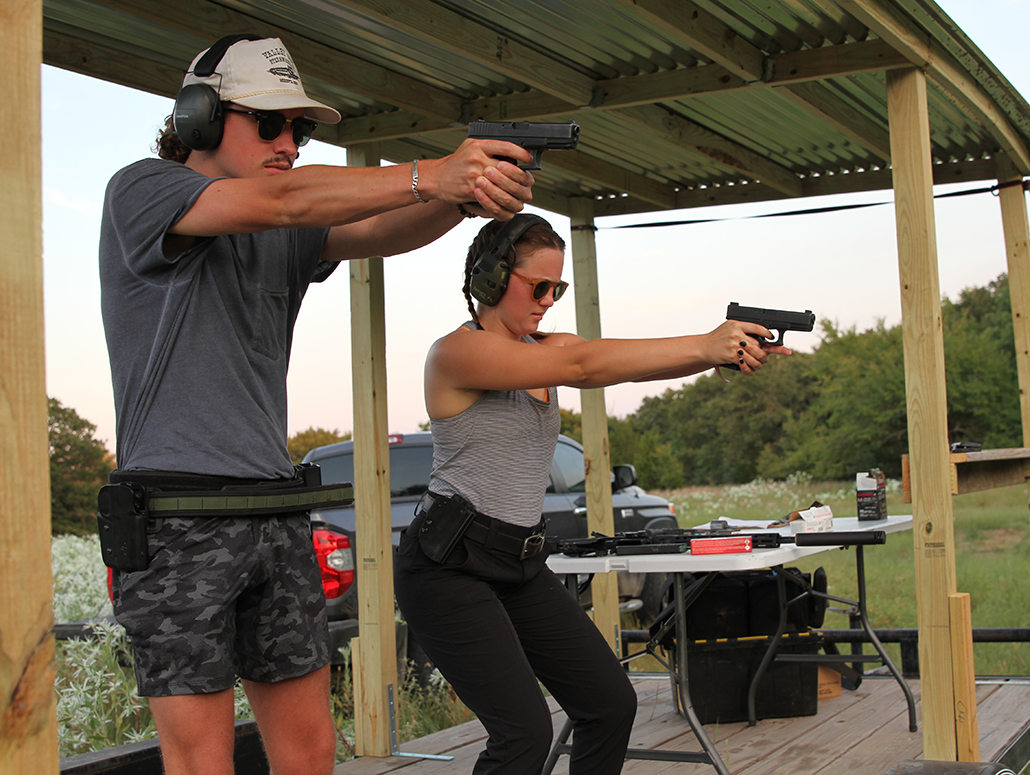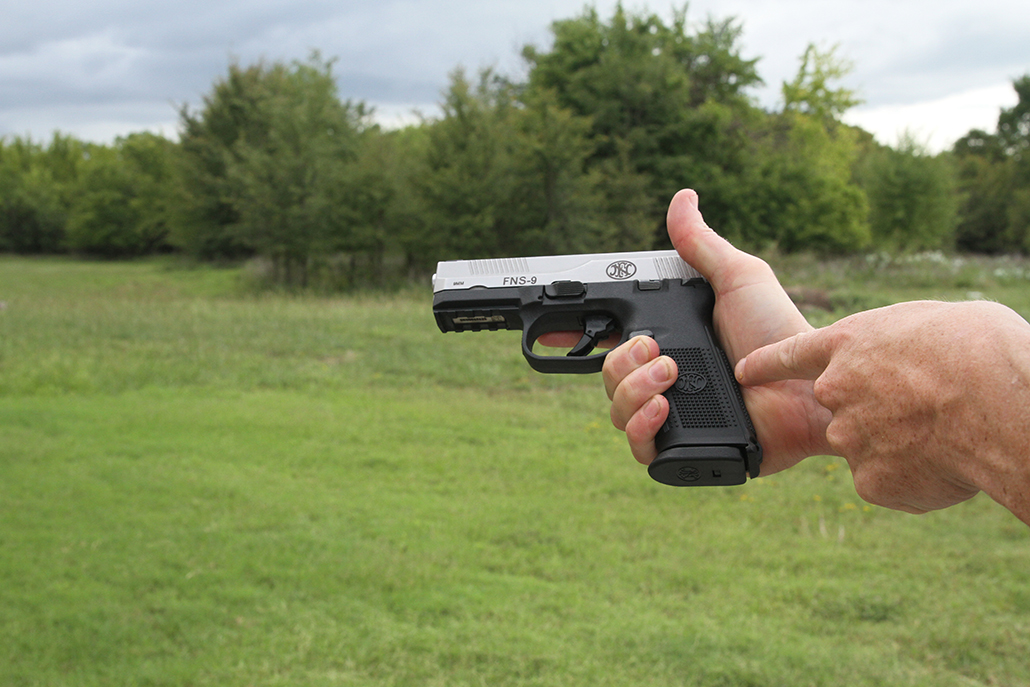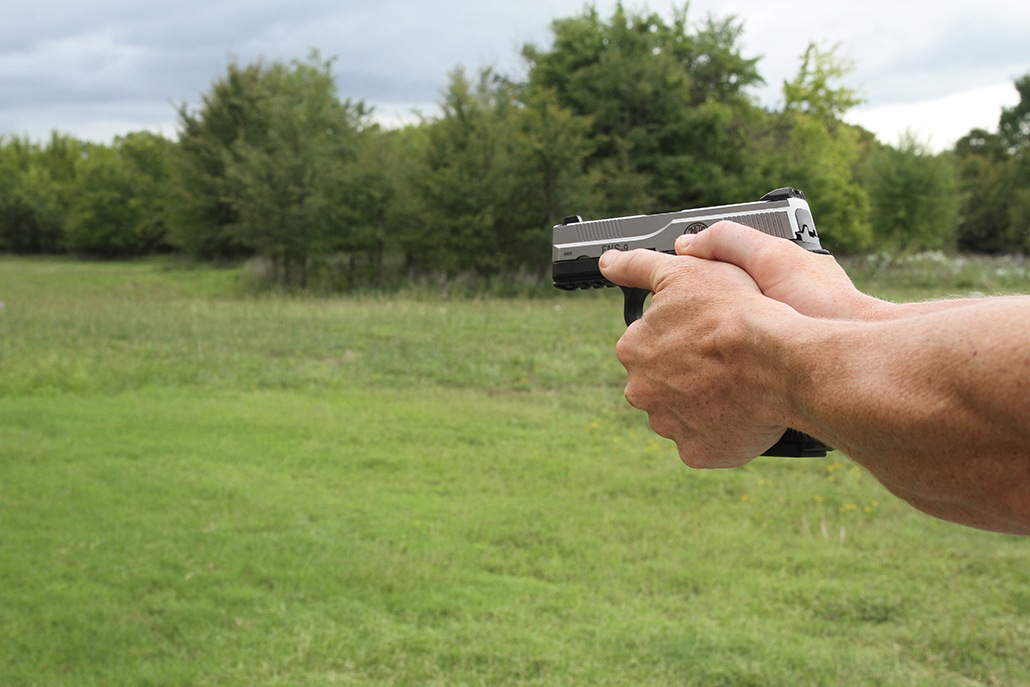Three Keys to Great Handgun Shooting

After safety is learned, focus on the following three keys of handgun shooting.
Once the fundamentals of shooting are learned, becoming great with your handgun boils down to three core aspects.

Establishing a Superb Grip
There are many ways to grip a handgun, and plenty of shooters have become proficient with a less-than-perfect grip through
practice and repetition. However, the vast majority of expert shooters agree that the two-handed “modern” grip, where the surface area of both palms make maximum contact on the gun’s grip panels, and both thumbs are positioned on the same side of the gun and pointed at the target.

First, with your trigger hand, place the web of your thumb and forefinger as high under the beavertail as possible. Likewise, your right index finger (for right handed shooters) should be as high up under the trigger guard as possible. This keeps the gun’s pivot point as high as possible and increases your leverage when the gun recoils.
Your grip should be as firm as you can reasonably hold the gun without shaking, and while still being able to move your trigger finger smoothly and independently. Once this grip is established, try to place equal amounts of pressure all around the gun (left and right, front and back) so that the gun can naturally travel back to the same point of aim after the recoil of every shot.
Getting a firm grip mitigates recoil, muzzle flip and keeps the sights on target during the trigger squeeze and follow through. A great grip cannot be overstressed–you’ll see dramatic improvement in your shooting.
Maintain Consistent Sight Picture.
Once you have a great grip, you need to get on target! The “sight picture” is what the shooter sees once the sights are aligned and placed on a target. Maintaining sight picture during the trigger pull and follow through for each and every shot is critical to mastering the second key aspect of handgun shooting.

To get on target, align the sights so the front sight post lines up with the top of the rear sight notch. You’ll also want to see equal amounts of “daylight” between the front post and both sides of the notch in the rear sight. This aligns the barrel correctly for windage and elevation. Next, while maintaining this sight alignment, the sights as a unit should be placed on the target. The narrower your focus, the better.
Repeatedly acquiring the same sight picture for every trigger pull will improve the consistency of your mechanics, and significantly increase accuracy.Trigger Pull, Don’t Flinch!
Shooting would be easy for many people, except for two things.
First, it is difficult to pull a 6-pound trigger rearward without moving the gun slightly left or right. Doing so requires good technique and mental discipline. The trigger should be pulled straight back with no lateral movement. Doing so minimizes movement of the gun during the bullet’s travel down the barrel and therefore enhances accuracy.
Secondly, once recoil is felt, the body subconsciously tries to protect itself against the force that it anticipates will come with each trigger pull. This is why many new shooters hit the target with their first shot but miss on the next shot. Good shooters have conditioned their minds to keep their hands still, despite the innate desire to flinch. They also trick their minds by pulling the trigger so slightly that the shot comes as a surprise, thereby mitigating flinch.
Trigger pulling should be mastered through copious amounts of dryfiring. With an unloaded handgun, first establish a proper grip. Then, while maintaining a perfect sight picture, practice squeezing the trigger without moving the gun. As the trigger breaks and the firing pin is released, the gun should show no movement. If you’ve done it poorly, you can see and feel the gun move as the trigger breaks. Practice over and over until your trigger pull is flawless.
Once you master these three keys of handgun shooting, you’ll have all but mastered the handgun itself.

Leave a Reply
You must be logged in to post a comment.